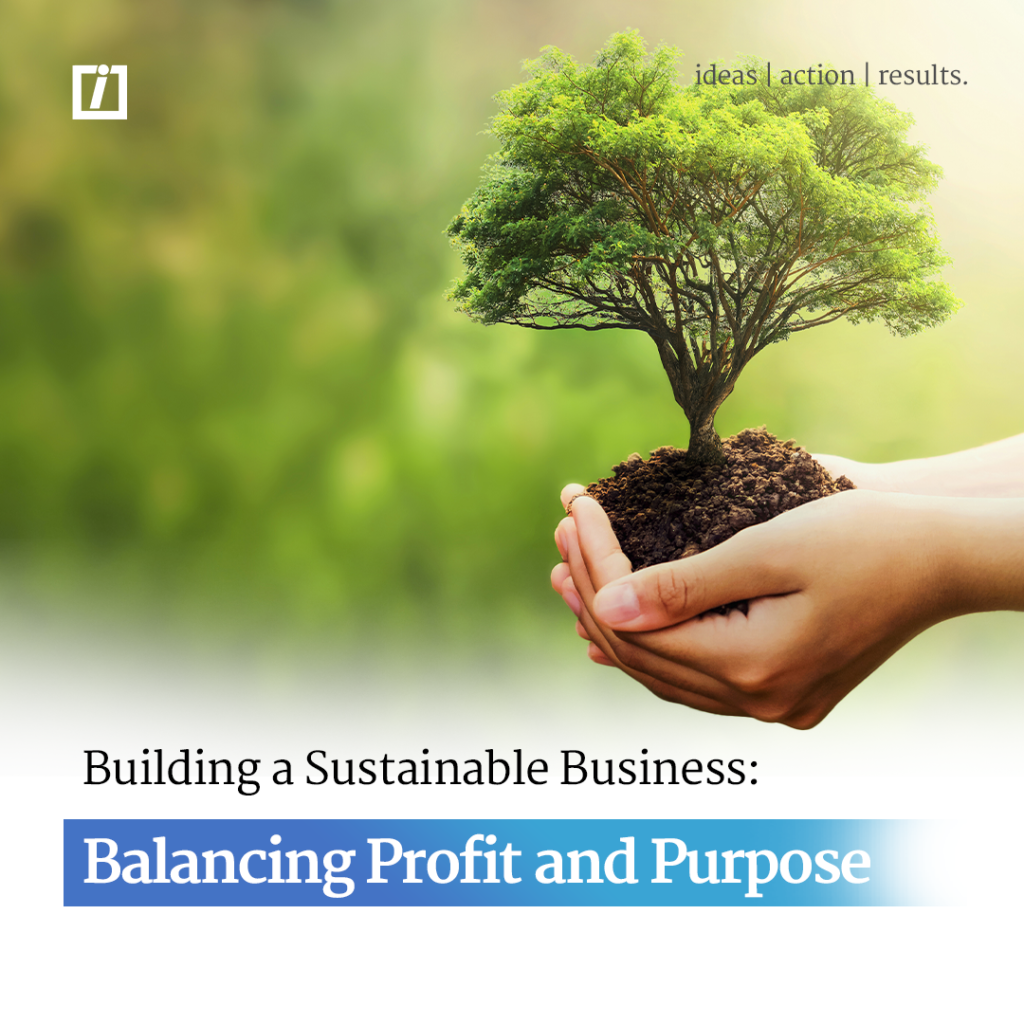Building a sustainable business that balances profit and purpose is an important goal for many entrepreneurs and organizations. By combining financial success with a positive social and environmental impact, businesses can contribute to the well-being of society while ensuring long-term viability. Here are some key considerations for achieving this balance:
Define your purpose: Start by clarifying your company’s purpose beyond just making a profit. Identify the social or environmental issues your business wants to address and how it can contribute to positive change. This purpose will guide your decision-making and help align your actions with your values.
Incorporate sustainability into your business model: Integrate sustainability into every aspect of your business. This can include adopting eco-friendly practices, minimizing waste and emissions, using renewable energy sources, and promoting fair labor practices. By embedding sustainability into your operations, you can reduce negative impacts and enhance your brand’s reputation.
Stakeholder engagement: Engage with stakeholders, including employees, customers, suppliers, and local communities, to understand their perspectives and incorporate their feedback. This collaboration helps build trust, fosters innovation, and ensures that your business addresses their needs and concerns. Consider implementing feedback mechanisms and conducting regular assessments of your social and environmental performance.
Responsible supply chain management: Assess and manage your supply chain to ensure ethical and sustainable practices are followed. Encourage your suppliers to adopt environmentally friendly approaches and respect labor rights. Transparency and traceability are crucial for maintaining accountability throughout the supply chain.
Product and service innovation: Look for opportunities to develop sustainable products and services that address societal or environmental challenges. Consider the entire lifecycle of your offerings, from sourcing materials to disposal, and aim for resource efficiency, durability, and recyclability. Innovate to create solutions that have a positive impact while meeting customer needs.
Measurement and reporting: Establish key performance indicators (KPIs) to track your progress toward sustainability goals. Regularly measure and report on your social, environmental, and financial performance to demonstrate your commitment to transparency and accountability. This data will help you identify areas for improvement and communicate your impact to stakeholders.
Collaboration and partnerships: Collaborate with like-minded businesses, organizations, and government entities to amplify your impact. By pooling resources, knowledge, and expertise, you can tackle complex challenges more effectively. Partnerships also enable shared learning and innovation.
Long-term thinking: Embrace a long-term perspective when making decisions. Sustainable business practices may require upfront investments or trade-offs in the short term, but they can lead to improved financial performance and resilience in the long run. Consider the triple bottom line—people, planet, and profit—when evaluating the success of your business.
Remember, balancing profit and purpose is an ongoing journey that requires continuous improvement and adaptation. By integrating sustainability into your business strategy, you can create a positive legacy and contribute to a more sustainable future.
Author: Index Lead Excellence Group

